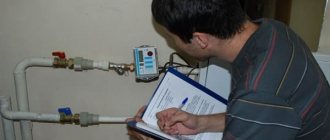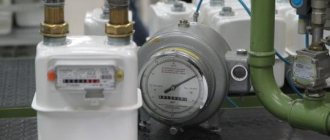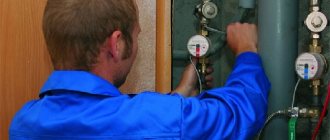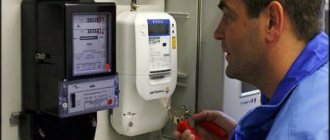Every consumer should know the procedure for replacing an electric meter in a private home, since the need to replace it periodically arises.
An uninitiated person has a number of questions: how often should the meter be changed, who to contact, who should do it, at whose expense, and many others.
When resolving this issue, it is necessary to take into account laws, state standards and technical requirements.
The legislative framework
Legislation on the installation of electric meters in individual houses
Before starting work, it is imperative to study the current regulations.
There are not many requirements, but deviations from the rules are fraught with sanctions from the supervisory authority. The procedure for installing electrical wiring and installing/replacing meters is regulated:
- Civil Code (Articles 541-544);
- “Rules for electricity metering” (Resolution of the Government of the Russian Federation dated November 2, 1995 No. 1087).
Only qualified specialists are entitled to service power consumption measuring instruments. Dismantling and replacement of equipment is carried out only with the permission of the service organization - clauses 4.3 - 4.7 of the Rules.
Reasons for replacement
In what cases is it necessary to replace electric meters?
The homeowner can replace the electric meter at his own discretion or in cases prescribed by law.
In general, there are four situations when the owner of a private residential building reinstalls electricity meters:
- repair of electrical networks and their modernization;
- planned dismantling;
- failure of the installed meter (breakage, incorrect readings);
- expiration of service life;
- desire to replace the device with a more modern model (for example, a multi-tariff device).
The main cases of replacing meters are associated with the expiration of the operational life of “ancient” devices, as well as insufficient power of those installed not so long ago. Usually the owner of the house understands himself that a meter that has served for three or four decades “no longer works.”
The fact is that a modern private house is simply “stuffed” with energy-intensive electronics:
- split systems;
- heating boilers;
- household electrical appliances;
- complex multi-level lighting;
- elements of the “smart home” system and much more.
Induction meters of outdated modifications, designed for a relatively gentle load, cannot cope with the situation and, as a result, “surprising” readings and knocking out plugs. The changing standards and regulations of energy suppliers should not be discounted.
Who installs the meters
Let's say the owner decides to replace the old meter. He found a repairman who reinstalled it for money. It would seem that everything is fine. But the management company classified these actions as illegal installation of a meter. And she did the right thing.
The owner did not coordinate his actions with the management organization and the resource supply organization. They didn’t do the verification, and now the owner needs to pay a fine.
According to paragraph 1 of Art. 543 of the Civil Code of the Russian Federation, the subscriber monitors the safety and proper operation of metering devices. If they fail or break, he immediately reports this to the RSO.
In RSO, for each request, a report is drawn up with the signature of specialists. This act is an important part of the defense in case of claims.
You do not need a license to install meters; owners can do it themselves. The main thing is to notify the resource supplying organization and obtain permission.
Let us remind you that if we are talking about ODPU, the owners pay for their installation. Initially, RSO installs communal meters at their own expense, and then the owners actually pay for their installation in equal installments over a period of five years.
If the RSO obliges the management organization to reimburse expenses, then the latter has the right to demand compensation from the owners of the premises.
According to paragraphs 80–81 of Rules N 354, you can use metering devices that are officially registered and verified. It is the consumer's responsibility to register the meter.
He writes an application to the RSO and provides documents for the meter. The utility supplier checks the documents and, if everything is in order, registers the device.
What to do if there is no technical possibility to install a control panel in the apartment building
Who should be responsible for replacing the electric meter and providing it for verification?
Who should monitor the condition of the electric meter?
How to change the electricity meter? According to the rules for electricity metering, replacement of the meter is carried out subject to the following conditions:
- you can begin dismantling only after coordinating your plans with the electricity supply authorities: upon a written request from the owner and receiving permission in the same form;
- The electric meter can only be replaced by a qualified electrician (that is, with a certificate of professional training) who has a Class 3 electrical safety permit.
Important! Reinstalling the meter without notifying the energy supplier is a violation of the home power supply contract and is fraught with serious fines.
To be completely confident in the correct installation and calibration of the device, it makes sense to apply for the service directly to the housing and communal services or electricity supplier.
Replacement procedure
It is necessary to decide who will pay for the replacement of the meter.
If this is a management company, then its employees draw up an agreement with the energy supply organization, and it carries out all the work.
If the contract states that replacing the meter is the responsibility of the home owner, then you will need to replace it yourself or hire the same energy supply organization (the best option).
Whoever replaces this device must have permission from the electricity supply company. Even when the meter is broken, you still cannot carry out any actions until the appropriate permission is received.
After completing the work, company representatives seal the meter and issue a certificate of completion of the work indicating the device number, seal and its readings.
Procedure for replacing the electric meter:
- writing an application and agreeing on the time of work;
- the controller takes readings from the meter and removes seals;
- preparing a place to install a new device;
- a box for this device is mounted;
- an electric meter is installed;
- the device is connected to the network;
- a test run is being performed;
- the functionality of both the device itself and the entire electrical network in the house is checked;
- a locking device is installed, since in private houses the meter is often located on the street;
- checking the electricity meter by representatives of the regulatory authority;
- sealing a new device.
Only a specialist who has the appropriate qualifications should replace the electric meter. Mistakes made not only lead to incorrect operation of the device, but also to emergency situations that are dangerous to human health.
Requirements for installing the meter
First of all, the electric meter must be on the list of devices approved for use that have passed state certification.
The manufacturer must have a license to manufacture electricity metering devices.
If this is all right, consider the other requirements:
- the accuracy of the meter readings must correspond to class 2;
- the strength of the current passing through the electrical networks of the house must correspond to the power of the electric meter;
- the distance from the floor to the bottom mounting area of the device should be 0.8-1.7 m;
- the wiring to the shield must be continuous without soldering or twisting;
- the meter must be securely fixed and protected from external influences by a metal container or cabinet;
- The installation location of the meter for a private home should be located in an area well protected from atmospheric influences, but at the same time, free access to the reading board must be provided for measuring credentials.
Documents for installing the meter
What documents are required to install an electric meter?
- Application from the owner of a private house to the electricity supplier to replace the meter;
- energy supply agreement;
- photocopy of the passport of the installed electricity meter;
- legal basis for owning real estate;
- copy of ID.
If the equipment replacement work is carried out by a representative, a notarized power of attorney is additionally attached.
The application is made in simple written form indicating:
- applicant’s data – full name, registration, etc.;
- personal account number opened with the energy supply company;
- address of the intended installation site of the meter;
- applicant's contact details.
How to change - procedure
The decision to change the water meter has been made. According to the established rules, first of all it is necessary:
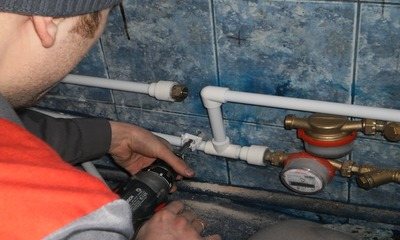
purchase a new metering device and carefully check its completeness;- determine the location: whether to put it in the same place as before, or, taking the opportunity, change it to a more convenient one;
- take into account illumination, free passage and convenience of taking readings;
- notify the management company and call a specialist to legalize the actions to replace meters.
Where to contact?
Where to go depends on the owner’s decision : whether the replacement will be done manually or by a master.
In the first case, you will need to notify the management company or the service provider and call a specialist to check the integrity of the seals, record the meter readings before dismantling work and unseal the device. It is prohibited to carry out such actions on your own.
In the second case, it is enough to call a specialist who will carry out all the same actions, and also dismantle the old device and install a new one. He will also have to issue all the necessary documents upon completion of the work.
Attention! The question of whether the MFC carries out such work is increasingly occupying the minds of apartment owners. This is due to a wave of fraudulent activities: representatives of the supposed MFC call users and, under various pretexts, strongly recommend replacing the meter, citing new laws.
Under threat of fines, they send a technician to replace a working (and sometimes new) meter and make money from it. The MFC on its official website urged not to succumb to such persuasion, since neither multifunctional centers nor the water utility never conduct telephone conversations; this is illegal.
What are the documents for reinstalling water meters?
To replace a water meter, you need to provide a list of documents.
Main list

Accredited organizations with a license to carry out such work claim that no special documents will be required when engaging them.
But in some cases (self-installation, master from the management company) you will need:
- Application for meter replacement.
- Identity card of the apartment owner and document on ownership.
- Accompanying documentation and technical passport for the replaced (old) device.
Whether these documents are required or not - you need to clarify this survey with the Criminal Code or Vodokanal by phone.
After carrying out the work, the master (or replacement specialist) must provide the following documents:
- certificate of work carried out to reinstall the control unit;
- technical passport and accompanying documents of the new launcher;
- receipt for payment for reinstallation services performed;
- certificate of proper quality of the new device during verification.
Drawing up an application
You can find out if an application is needed by calling. It is enough to contact the management company or water supply service provider. They may provide an application form or ask you to write one yourself.
In the second case, you need to remember the following points:
- At the top of the application there must be an address of application (UK or Vodokanal);
- next is the word statement, under it there should be a request to install the meter in any form;
- below is the address of the apartment/house;
- telephone number by which the technician will contact the user;
- information about the attached documents (for example, payment receipts);
- Full name of the applicant, below – signature and date of application.
Important! A prerequisite is the applicant’s current contact information, an accurate and detailed address, written legibly.
Drawing up an act
Filling out the act is regulated by law. Government Decree No. 354 (dated 05/06/2011) mandatory prescribes:
- the exact address where the reinstallation should be carried out;
- localization (for example, a bathroom, pipe or cold water riser);
- information about the device being replaced;
- information about the new PU;
- the exact date of reinstallation, coinciding with the day of signing this document;
- the performing organization, as well as the license number confirming the right to carry out such work;
- signature of the specialist who carried out the reinstallation.
Dismantling the old device
Before starting work, you must turn off the water to the riser. To do this, you need to call the management company, or turn off the valve yourself if it is located in the apartment.
Next, drain the remaining liquid by opening the mixer. You will also need rags to remove any remaining liquid from the pipe at the dismantling site.
Then the following steps are performed step by step:
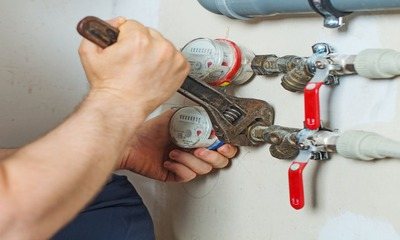
Using an adjustable wrench, loosen the fastening nuts of the old device. If they don’t give in, you can heat them slightly, or use a special solution.- If there is a pronounced distortion of the pipes, they are fixed with a wrench.
- The fitting is cleaned: rust and dirt must be removed.
- The mounting area is dried.
At the final stage, debris is removed from the coarse filter.
Installation of a new
Before installation, the inlet and outlet openings on the device are determined. Confusion will lead to incorrect readings and malfunctions.
If there is no corresponding arrow pointing to the entrance, you need to pay attention to the location of the plastic filter, which points to the entrance.
Further:
- Assembling the fitting: insert it into the threaded nut, screw it into the outlet on the pipe using a wrench.
- Place the rubber washer inside the nut.
- Wrap linen tape around the thread and moisten it evenly with silicone.
- Connect the new PU with a wrench to the pipes.
At the final stage, you need to check the tightness of the connection. All the taps in the apartment are closed and water is released through the riser. You can place filter or toilet paper at the fastening points. If it gets wet, you will need to tighten the connections.
Meter models for private homes
How to choose the right electric meter model?
What are the features of electricity consumption in a private home? As a rule, this is a large number of electrical appliances, electricity-dependent systems and large areas of premises. Taking these characteristics into account, we select a counter.
Induction (mechanical) electricity meter
The operating principle is based on the action of current and voltage coils. The coils themselves are stationary, but the magnetic field they generate sets the mechanical disk in motion.
The counting mechanism of the device takes into account the number of disk revolutions and the amplitude of disk movement. The latter indicator is directly proportional to the power of energy consumed during the estimated time.
Features of operation.
- An undoubted advantage is reliability and long service life: even a 50-year-old “long-liver” can quite regularly produce kilowatts.
- However, mechanical devices are not very accurate and are not protected from unauthorized connections by third parties.
- They always operate in single-tariff mode, which does not allow optimal adjustment of energy consumption in the house.
Choosing an electricity meter
There is a large selection of electric meters on the market, which differ in technical characteristics.
Device type and operating principle
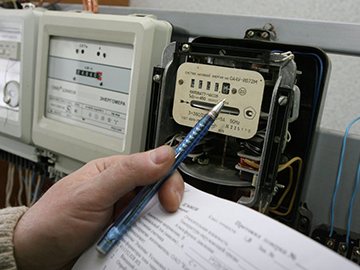
Induction models have a disk in their device, the number of revolutions of which is used to measure the electricity consumed.
Their advantages are low cost and a long period between scheduled inspections.
Electronic devices operate on microcircuits and semiconductors; nothing rotates, so the accuracy class is higher.
Number of phases
For single-phase networks, single-phase devices are used, and for three-phase networks, three-phase models are used. Some three-phase meters can operate on any network. If necessary, three single-phase meters can be connected to a network that has three phases, and the energy will be taken into account for each phase separately.
Accuracy class
This parameter takes into account the error that occurs when making measurements; it is indicated as a percentage. Older models had an error of 2.5%, while modern electricity meters have an error of up to 0.2%. For use in a private home, the accuracy class of the device must be 2%.
Connection method
If the current load is up to 100 A, then direct connection models are installed; if it is larger, then an additional current transformer must be used.
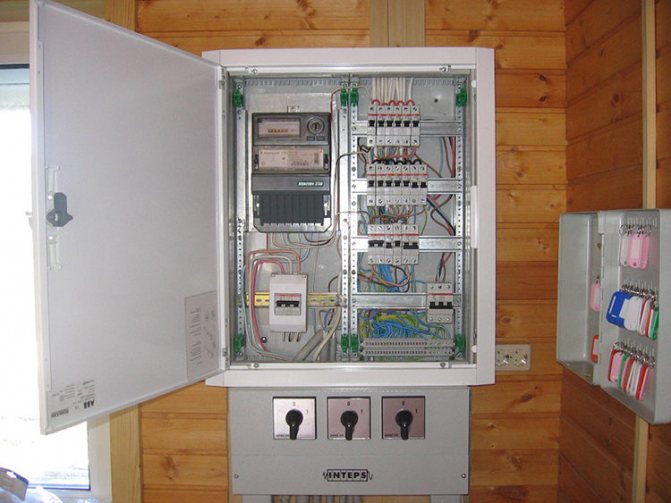
Installation and connection features
Voltage class
It can be 220/380 V and 100 V; the second option is needed if the power is supplied from a 6 and 10 kV line.
Number of tariffs
Electricity meters can be single-, double- and multi-tariff. The presence of a two-tariff meter allows you to pay differently for energy consumed during the day and at night; there is almost a double difference between the tariffs.
Owners of two-tariff meters actively use washing machines, dishwashers and other electrical appliances with high energy consumption at night, but you should know that the payback for this device can take several years.
What to consider when choosing a meter for a private home?
Parameters by which you select an electric meter for your home
- First of all, you need to clarify the features of the home’s energy supply.
- The type of connected voltage, quantity and power of household appliances and electrical equipment are specified.
- A wiring diagram for the household is also required.
If the house was recently rebuilt, this data is reflected in the technical documentation. If you don’t have the papers, you need to contact the energy sales office.
Now it’s worth taking a closer look at the functions and capabilities of electricity meters. When the recorder is selected, you need to make sure that there are verification seals. Their validity period:
- for a single-phase device – 2 years;
- for three-phase – 1 year.
Whatever meter is installed, it must meet the requirements of state standard P 52320-2005. The law allows the installation of both an electronic device and an “induction” device. It is imperative to replace recorders with a measurement accuracy of 2.5 with devices of class 2.0 or less.
And remember, the responsibility for replacing an outdated electric meter lies with the homeowner.
You can learn about the standards for installing an electric meter in an individual home by watching the video:
See also Phone numbers for consultation June 10, 2021 kasjanenko 1064
Share this post
Discussion: 2 comments
- Andrey says:
03/28/2018 at 00:33I heard information on the radio that a new law should soon come into force, which will impose the responsibility for installing electricity meters on companies, including the cost of the meter itself. Please tell me, is this true?
Answer
- Dasha says:
04/13/2018 at 00:38
Andrey, don’t worry, whether it’s a company or a government organization, none of them will work at a loss. They included the cost of this meter, calls for an electrician, and replacement of the meter in the cost of electricity.
Answer
Do-it-yourself meter replacement in a private home
In order to install an electricity meter with your own hands, you must have the appropriate knowledge and skills. You can purchase an electrical panel assembled, or you can buy everything you need separately:
- electric meter;
- box for its placement;
- cable with a diameter of at least 3 mm;
- din rail;
- circuit breaker;
- fasteners.
Usually, the passport of the purchased device contains a diagram of its connection. The order of work will be as follows:
- first, distribute all the elements in the shield, so you will understand whether it fits the dimensions, and there will be no problems during the installation process;
- markings are made on the wall according to which the DIN rail and box are fixed;
- an automatic switch is installed on the rail;
- according to the existing diagram, the wiring is done;
- the phase is output to the switch;
- the wires are stripped to 10-20 mm and securely fixed in the terminals;
- cables should not overlap, otherwise they will overheat in these places;
- grounding is installed.
Modern electricity meters have the ability to transmit data remotely, which facilitates the work of supervisory authorities.
By law, both electronic and induction electricity meters can be installed, but they must meet existing standards and have an error of no more than 2%. Knowing the technical requirements, you will be able to correctly buy the necessary device, decide who should pay for its replacement, and, if necessary, replace the electric meter yourself.
